
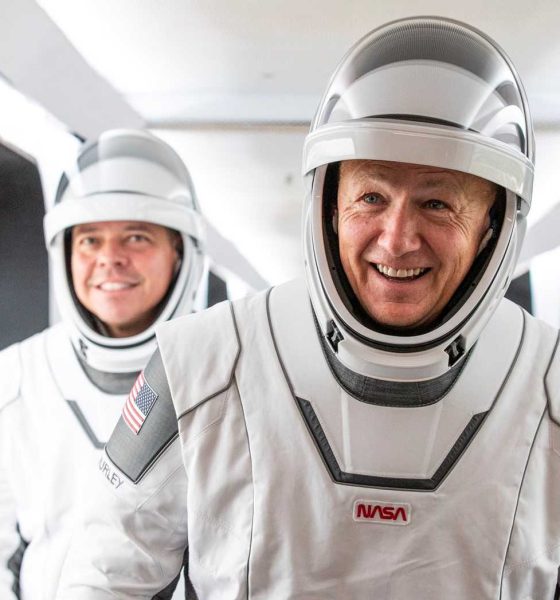
News
SpaceX’s first NASA astronauts to receive Space Medal of Honor for Dragon test flight
NASA says that the astronauts responsible for SpaceX’s first crewed Dragon test flight will be awarded the Congressional Space Medal of Honor for their bravery.
Kamala Harris, the sitting US Vice President and Chair of the National Space Council, will bestow the exceptionally rare awards to former NASA astronauts Douglas Hurley and Robert Behnken in a ceremony on Tuesday, January 31st. NASA will stream the event live on all social media platforms and its own NASA TV service, beginning around 4:15 pm EST (21:15 UTC).
The update that's rolling out to the fleet makes full use of the front and rear steering travel to minimize turning circle. In this case a reduction of 1.6 feet just over the air— Wes (@wmorrill3) April 16, 2024
Since Congress authorized the Congressional Space Medal of Honor in 1969, it has been awarded just 28 times. Just 11 went to living astronauts, while the other 17 were awarded posthumously: to the three NASA astronauts killed in the 1967 Apollo 1 accident and the 14 astronauts killed in the Space Shuttle’s 1986 Challenger disaster and 2003 Columbia disaster. Former President George W. Bush awarded the most recent medal to Robert L. Crippen, the first Space Shuttle pilot, in 2006.
NASA notes that “despite the medal’s name, the President awards this medal based upon recommendations from the NASA Administrator,” indicating that Administrator Bill Nelson selected Behnken and Hurley for the honor. It’s difficult to imagine a pair of astronauts more worthy of ending the 16-year gap since the last Space Medal of Honor was awarded.
Prior to the Dragon test flight they will be honored for, Behnken and Hurley had storied careers in the US military and at NASA. Bob Behnken earned a PhD in mechanical engineering from Caltech in 1997 and eventually became a lead flight test engineer in the US Air Force’s F-22 Raptor program. He was selected as a NASA astronaut candidate in 2000 and flew two Space Shuttle missions in 2008 and 2010. In 2012, Behnken was chosen to lead NASA’s prestigious Astronaut Office, and did so for three years before he began training for the Commercial Crew Program.
Doug Hurley earned a Bachelor’s degree in civil engineering in 1988 and received a commission in the US Marine Corps upon graduating. He made three deployments as an F/A-18 pilot and later became a Navy Test Pilot in 1997. Hurley was “the first Marine pilot to fly the F/A-18 E/F Super Hornet” and has experience flying more than 25 types of aircraft. He was also selected to become an astronaut in 2000 and flew on two Space Shuttle flights, including the Shuttle’s 135th and final mission in 2011.
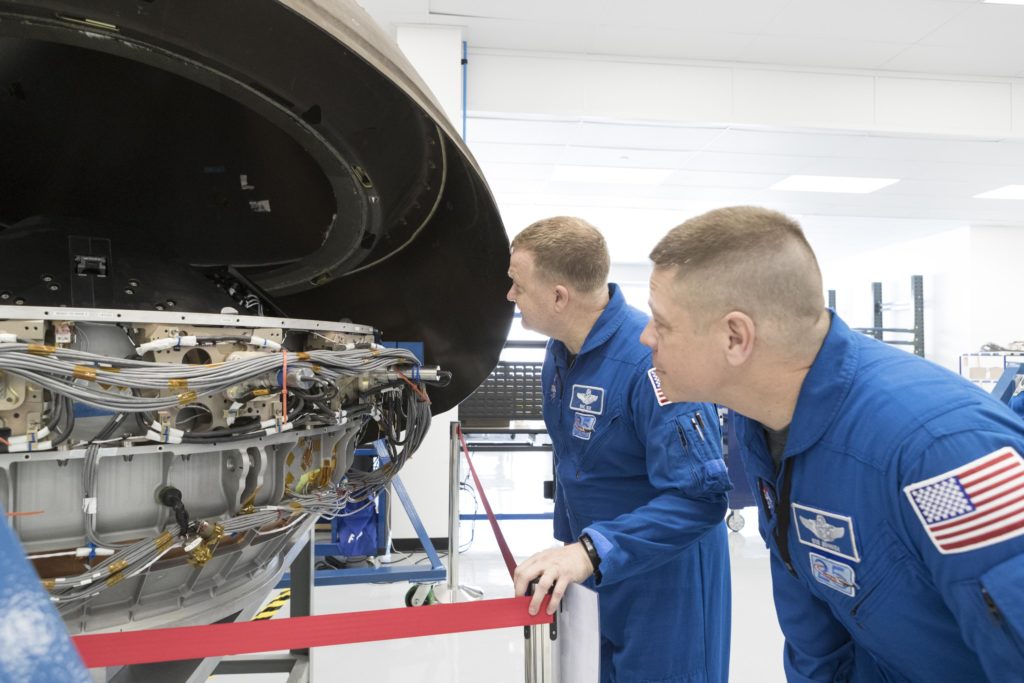
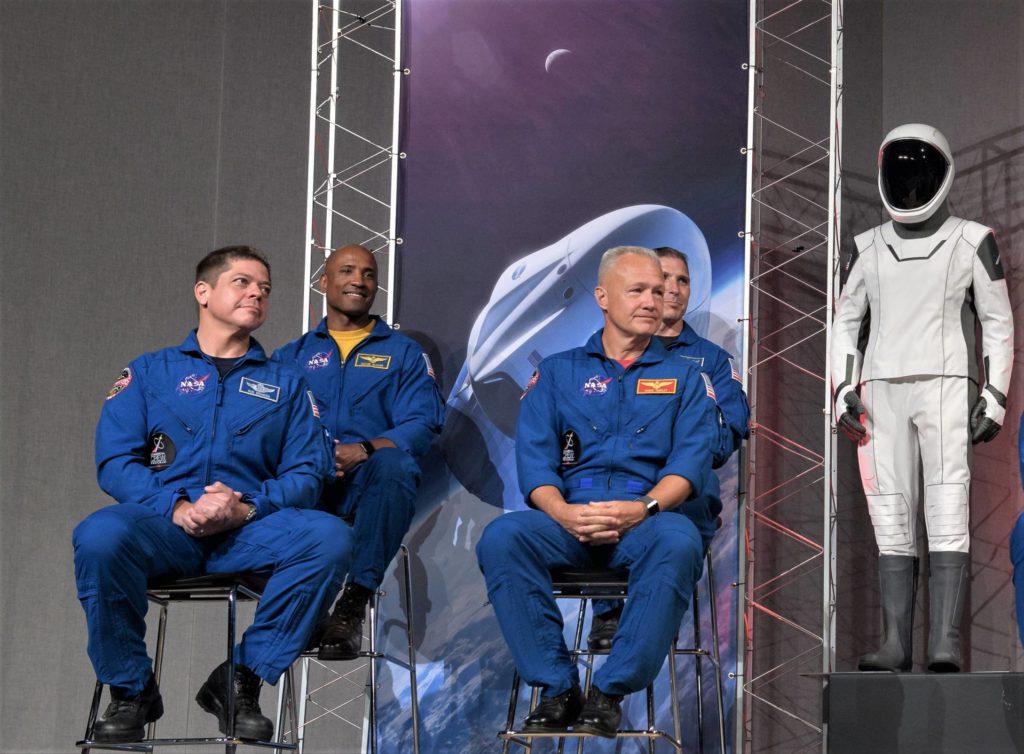
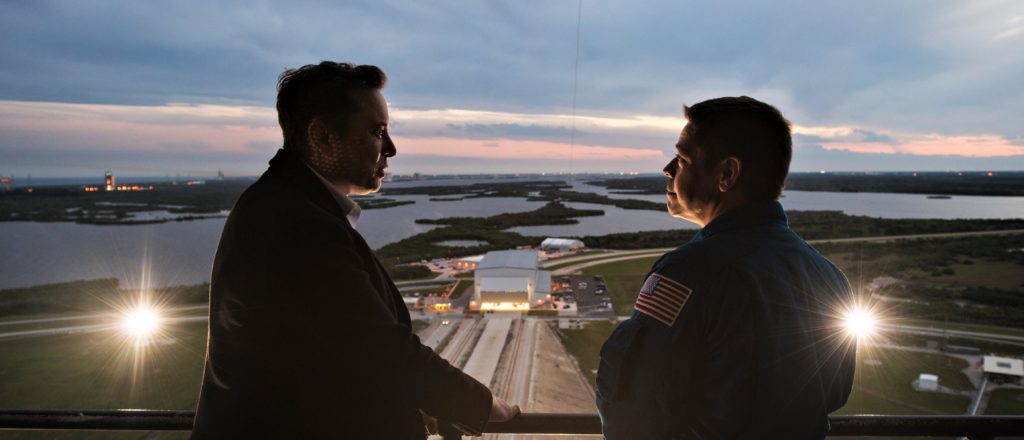

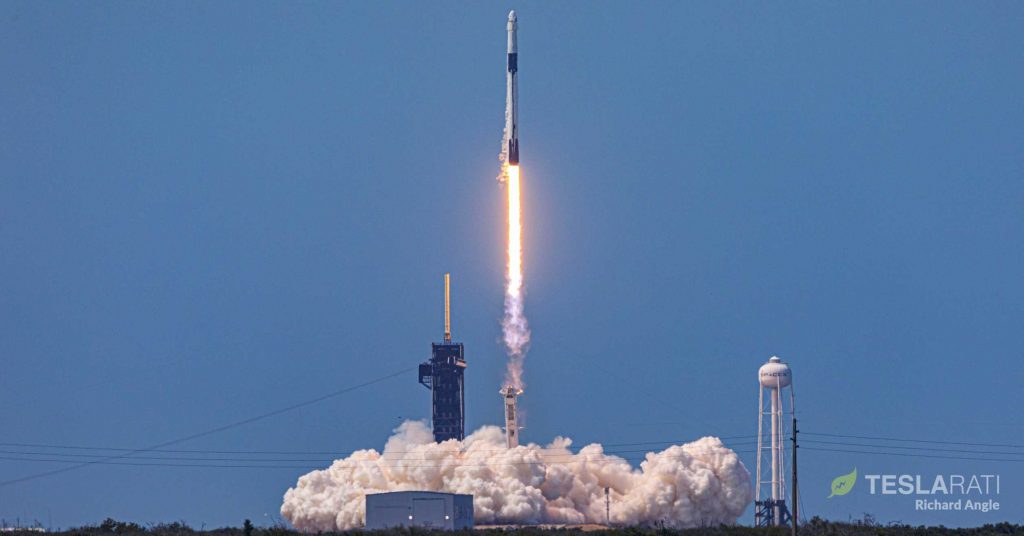

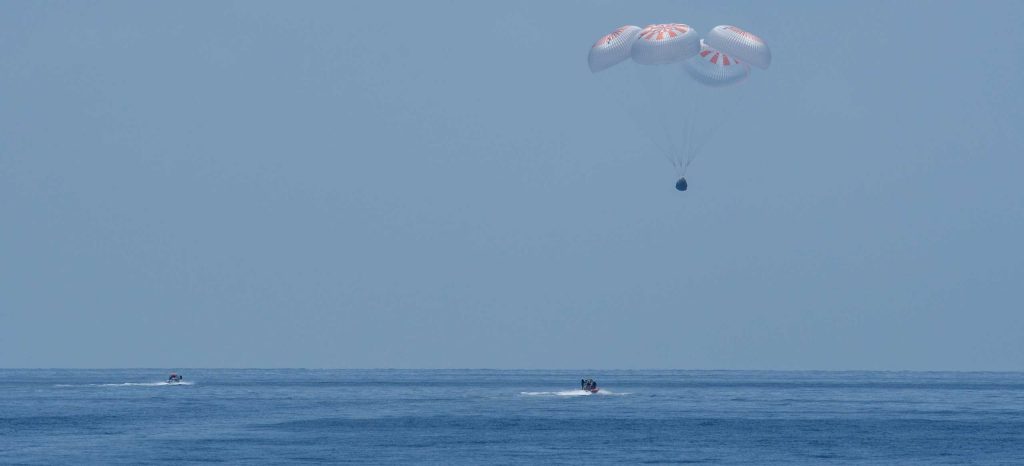
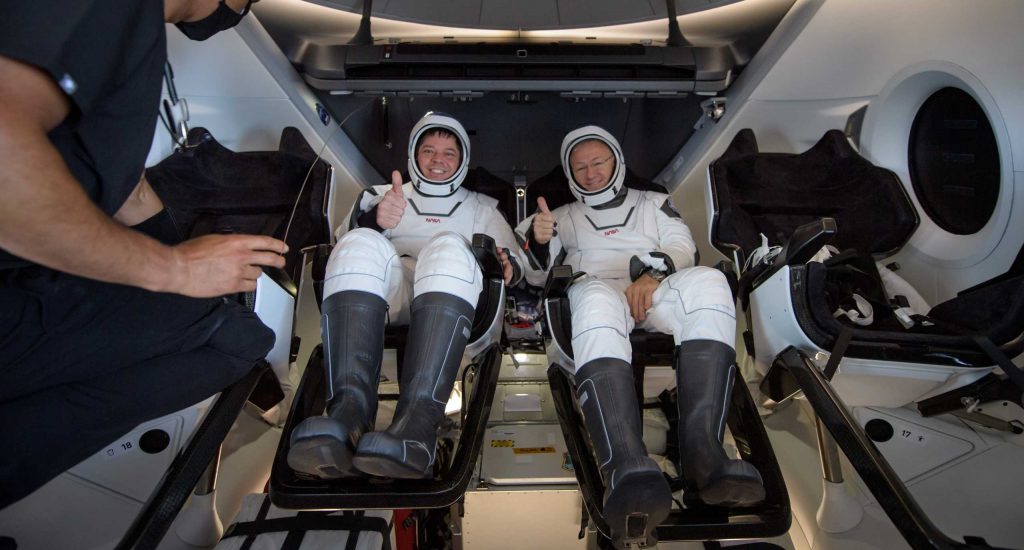
In 2018, Bob Behnken and Doug Hurley were assigned to SpaceX’s first crewed Crew Dragon test flight. Leaning on their histories as pilots and engineers, they worked with SpaceX for multiple years before the company’s historic astronaut launch debut. Their input lives on today throughout SpaceX’s Dragon program, from the spacecraft’s design and interior to how the company trains private and public astronauts.
On May 30th, 2020, Bob Behnken and Doug Hurley became the first NASA astronauts to lift off from US soil since the Space Shuttle’s 2011 retirement and the first astronauts in history to ride a privately-developed rocket and spacecraft into orbit. Defying expectations, Crew Dragon beat Boeing’s Starliner spacecraft to the punch and performed (more or less) flawlessly throughout its Demo-2 test flight.
NASA was so confident in SpaceX – and encouraged by Crew Dragon’s initial performance – that Demo-2 was extended from a minimum duration of about a week to 62 days. After two months in orbit, Crew Dragon successfully undocked from the International Space Station (ISS), deorbited, reentered Earth’s atmosphere, deployed parachutes, and gently splashed down in the Gulf of Mexico – safely returning Behnken and Hurley to Earth.
The highly successful test flight allowed NASA to rapidly certify Dragon. Less than four months later, another Crew Dragon spacecraft lifted on a Falcon 9 rocket on SpaceX’s first operational astronaut ferry mission for NASA. More than two years later, Boeing’s Starliner remains uncertified, and Crew Dragon is still the only spacecraft capable of sustaining the presence of NASA astronauts at the ISS. SpaceX is on track to launch its sixth consecutive astronaut ferry mission – Crew-6 – no earlier than February 26th.
The pressure on SpaceX and the importance of Crew Dragon to NASA cannot be overstated. In a nontrivial sense, NASA and SpaceX would not have Crew Dragon’s essential – and currently irreplaceable – capabilities without the work done and risks taken by Behnken and Hurley. Had either astronaut made a significant mistake or faltered during Dragon’s Demo-2 test flight, the state of US human spaceflight could be significantly worse off than it is today. Instead, the astronauts played their parts to perfection and helped catapult SpaceX, NASA, and the world into a new era of commercial human spaceflight.
Bob Behnken and Doug Hurley retired from NASA in 2021 and 2022, respectively. They will receive the 29th and 30th Congressional Space Medals of Honor.

Elon Musk
Elon Musk’s X will start using a Tesla-like software update strategy
The initiative seems designed to accelerate updates to the social media platform, while maintaining maximum transparency.

Elon Musk’s social media platform X will adopt a Tesla-esque approach to software updates for its algorithm.
The initiative seems designed to accelerate updates to the social media platform, while maintaining maximum transparency.
X’s updates to its updates
As per Musk in a post on X, the social media company will be making a new algorithm to determine what organic and advertising posts are recommended to users. These updates would then be repeated every four weeks.
“We will make the new 𝕏 algorithm, including all code used to determine what organic and advertising posts are recommended to users, open source in 7 days. This will be repeated every 4 weeks, with comprehensive developer notes, to help you understand what changed,” Musk wrote in his post.
The initiative somewhat mirrors Tesla’s over-the-air update model, where vehicle software is regularly refined and pushed to users with detailed release notes. This should allow users to better understand the details of X’s every update and foster a healthy feedback loop for the social media platform.
xAI and X
X, formerly Twitter, has been acquired by Elon Musk’s artificial intelligence startup, xAI last year. Since then, xAI has seen a rapid rise in valuation. Following the company’s the company’s upsized $20 billion Series E funding round, estimates now suggest that xAI is worth tens about $230 to $235 billion. That’s several times larger than Tesla when Elon Musk received his controversial 2018 CEO Performance Award.
As per xAI, the Series E funding round attracted a diverse group of investors, including Valor Equity Partners, Stepstone Group, Fidelity Management & Research Company, Qatar Investment Authority, MGX, and Baron Capital Group, among others. Strategic partners NVIDIA and Cisco Investments also continued support for building the world’s largest GPU clusters.
News
Tesla FSD Supervised wins MotorTrend’s Best Driver Assistance Award
The decision marks a notable reversal for the publication from prior years, with judges citing major real-world improvements that pushed Tesla’s latest FSD software ahead of every competing ADAS system.

Tesla’s Full Self-Driving (Supervised) system has been named the best driver-assistance technology on the market, earning top honors at the 2026 MotorTrend Best Tech Awards.
The decision marks a notable reversal for the publication from prior years, with judges citing major real-world improvements that pushed Tesla’s latest FSD software ahead of every competing ADAS system. And it wasn’t even close.
MotorTrend reverses course
MotorTrend awarded Tesla FSD (Supervised) its 2026 Best Tech Driver Assistance title after extensive testing of the latest v14 software. The publication acknowledged that it had previously criticized earlier versions of FSD for erratic behavior and near-miss incidents, ultimately favoring rivals such as GM’s Super Cruise in earlier evaluations.
According to MotorTrend, the newest iteration of FSD resolved many of those shortcomings. Testers said v14 showed far smoother behavior in complex urban scenarios, including unprotected left turns, traffic circles, emergency vehicles, and dense city streets. While the system still requires constant driver supervision, judges concluded that no other advanced driver-assistance system currently matches its breadth of capability.
Unlike rival systems that rely on combinations of cameras, radar, lidar, and mapped highways, Tesla’s FSD operates using a camera-only approach and is capable of driving on city streets, rural roads, and freeways. MotorTrend stated that pure utility, the ability to handle nearly all road types, ultimately separated FSD from competitors like Ford BlueCruise, GM Super Cruise, and BMW’s Highway Assistant.
High cost and high capability
MotorTrend also addressed FSD’s pricing, which remains significantly higher than rival systems. Tesla currently charges $8,000 for a one-time purchase or $99 per month for a subscription, compared with far lower upfront and subscription costs from other automakers. The publication noted that the premium is justified given FSD’s unmatched scope and continuous software evolution.
Safety remained a central focus of the evaluation. While testers reported collision-free operation over thousands of miles, they noted ongoing concerns around FSD’s configurable driving modes, including options that allow aggressive driving and speeds beyond posted limits. MotorTrend emphasized that, like all Level 2 systems, FSD still depends on a fully attentive human driver at all times.
Despite those caveats, the publication concluded that Tesla’s rapid software progress fundamentally reshaped the competitive landscape. For drivers seeking the most capable hands-on driver-assistance system available today, MotorTrend concluded Tesla FSD (Supervised) now stands alone at the top.
News
Elon Musk’s Grokipedia surges to 5.6M articles, almost 79% of English Wikipedia
The explosive growth marks a major milestone for the AI-powered online encyclopedia, which was launched by Elon Musk’s xAI just months ago.

Elon Musk’s Grokipedia has grown to an impressive 5,615,201 articles as of today, closing in on 79% of the English Wikipedia’s current total of 7,119,376 articles.
The explosive growth marks a major milestone for the AI-powered online encyclopedia, which was launched by Elon Musk’s xAI just months ago. Needless to say, it would only be a matter of time before Grokipedia exceeds English Wikipedia in sheer volume.
Grokipedia’s rapid growth
xAI’s vision for Grokipedia emphasizes neutrality, while Grok’s reasoning capabilities allow for fast drafting and fact-checking. When Elon Musk announced the initiative in late September 2025, he noted that Grokipedia would be an improvement to Wikipedia because it would be designed to avoid bias.
At the time, Musk noted that Grokipedia “is a necessary step towards the xAI goal of understanding the Universe.”
Grokipedia was launched in late October, and while xAI was careful to list it only as Version 0.1 at the time, the online encyclopedia immediately earned praise. Wikipedia co-founder Larry Sanger highlighted the project’s innovative approach, noting how it leverages AI to fill knowledge gaps and enable rapid updates. Netizens also observed how Grokipedia tends to present articles in a more objective manner compared to Wikipedia, which is edited by humans.
Elon Musk’s ambitious plans
With 5,615,201 total articles, Grokipedia has now grown to almost 79% of English Wikipedia’s article base. This is incredibly quick, though Grokipedia remains text-only for now. xAI, for its part, has now updated the online encyclopedia’s iteration to v0.2.
Elon Musk has shared bold ideas for Grokipedia, including sending a record of the entire knowledge base to space as part of xAI’s mission to preserve and expand human understanding. At some point, Musk stated that Grokipedia will be renamed to Encyclopedia Galactica, and it will be sent to the cosmos.
“When Grokipedia is good enough (long way to go), we will change the name to Encyclopedia Galactica. It will be an open source distillation of all knowledge, including audio, images and video. Join xAI to help build the sci-fi version of the Library of Alexandria!” Musk wrote, adding in a later post that “Copies will be etched in stone and sent to the Moon, Mars and beyond. This time, it will not be lost.”








